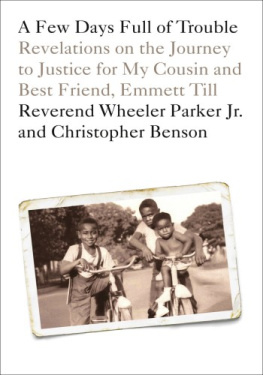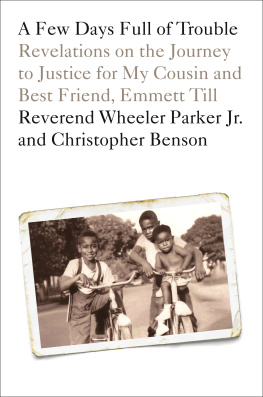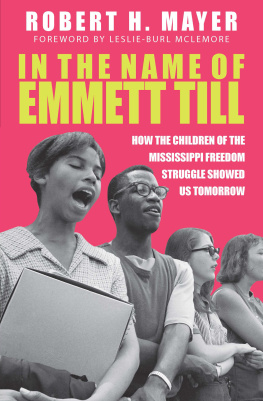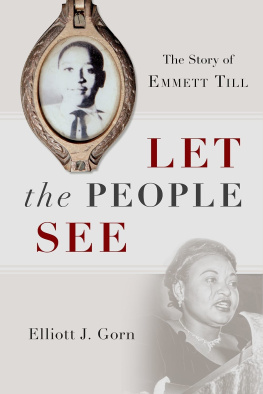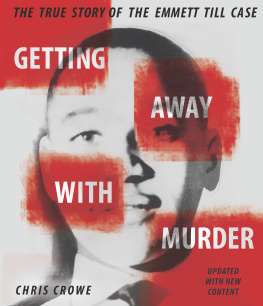ALSO BY JOHN EDGAR WIDEMAN
Fanon: A Novel
Briefs: Stories
Gods Gym: Stories
The Island: Martinique
Hoop Roots: Basketball, Race, and Love
Two Cities: A Novel
The Cattle Killing: A Novel
Fatheralong: A Meditation on Fathers and Sons, Race and Society
All Stories Are True
The Stories of John Edgar Wideman
Philadelphia Fire: A Novel
Fever: Stories
Reuben: A Novel
Brothers and Keepers: A Memoir
Sent for You Yesterday: A Novel
Damballah: Stories
Hiding Place: A Novel
The Lynchers: A Novel
Hurry Home: A Novel
A Glance Away: A Novel

Scribner
An Imprint of Simon & Schuster, Inc.
1230 Avenue of the Americas
New York, NY 10020
www.SimonandSchuster.com
Copyright 2016 by John Edgar Wideman
All rights reserved, including the right to reproduce this book or portions thereof in any form whatsoever. For information address Scribner Subsidiary Rights Department, 1230 Avenue of the Americas, New York, NY 10020.
First Scribner hardcover edition November 2016
SCRIBNER and design are registered trademarks of The Gale Group, Inc., used under license by Simon & Schuster, Inc., the publisher of this work.
For information about special discounts for bulk purchases, please contact Simon & Schuster Special Sales at 1-866-506-1949 or .
The Simon & Schuster Speakers Bureau can bring authors to your live event. For more information or to book an event contact the Simon & Schuster Speakers Bureau at 1-866-248-3049 or visit our website at www.simonspeakers.com.
Interior design by Jill Putorti
Jacket design by Eric White
Library of Congress Control Number: 2016015604
ISBN 978-1-5011-4728-9
ISBN 978-1-5011-4730-2 (ebook)
In this work, which is an amalgam of research, memoir, and imagination, I have changed the names of some of the people and places that appear and in a few instances have created composite individuals.
Dedicated to prisoners
Looking through steel bars at a guard, the prisoner said: I am sad to see how unhappy you are in your cage
all stories are true...
CHINUA ACHEBE, THINGS FALL APART
CONTENTS
I
LOUIS TILL
O ne of my grandfathers, John French, my mothers father, taller, skin a shade lighter than many of the Italian immigrants he worked beside plastering and hanging wallpaper, used to ride me on his shoulders through the streets of our colored community Homewood in Pittsburgh, Pennsylvania. I loved to sit up there. Safe. King of the world. Entranced by my grandfathers tales about the neighborhood, by his long silences, his humming, his rhymes and songs. His broad shoulders a sanctuary I would count on, even when my father disappeared periodically from various homes shared with my mother and me.
I have never forgotten how peaceful the world looked from up there. How one day while I rode on my grandfathers shoulders, my hands, knees, careful not to tip his wide-brimmed, brown hat, we passed Clement, a smallish man who swept out Hendersons Barbershop. But back then, at this precise moment in the Homewood streets, I knew nothing about Clement, except I could see he limped, dragging along one worrisome foot in an oversize boot, and see he had a big face ugly enough to seem scary, even from my perch, a face with distorted features I did know would loom in my nightmares for years afterward.
John French called out the name Clement and the man returned the greeting with a slowly forming but finally huge grin, openmouthed, few teeth, a lingering gaze that fixed upon us, then inside us, then wandered far, far past us. A look telling me that everything familiar to me could instantly be unsettled and dissolve.
In 1955, about nine years after that encounter on the Homewood streets, I was fourteen years old, and a photo of dead Emmett Tills mutilated face entered my life with the same sudden, indelible truth as Clement.
Just in case you dont recall, Ill remind you that in 1955, Emmett Till, also age fourteen, boarded a train in Chicago to visit family in Mississippi. A few weeks later a train brought his dead body back to Chicago. Emmett Louis Till had been murdered because he was a colored boy and had allegedly wolf-whistled a white lady.
* * *
Over half a century later, Im still dealing wih the faces of Clement and Till. To provide background for a fiction I intended to write about Emmett Till, I saved excerpts from newspaper coverage of the trial of Tills muderers.
Over sixty newspapers on hand in 1955 for the Sumner, Mississippi, trial. Thirty photographers popping flashbulbs, seventy reporters pecking away at truth on their typewriters. I was a bit surprised by how much national and international attention the trial had attracted. Not surprised to learn public interest had rapidly evaporated. Today Emmett Till is generally viewed as a civil rights martyr, but the shabby trial that exonerated his killers, and the crucial role played by Tills father in the trial have largely disappeared from the publics imagination. Silenced, the Till trial serves as an unacknowledged, abiding precedent. Again and again in courtrooms across America, killers are released as if colored lives they have snatched away do not matter.
... the day opened hot and humid, the heat rising to an almost unbearable 95 degrees. ( Chicago Defender )
... townspeople of Sumner have never seen anything like it herethe crowds, the out-of-state newsmen and the excitement of a big trialnot even on Saturdays or when merchants conduct a drawing to give away an automobile... Citizens estimated as many as a thousand outsiders came, more than on the biggest trade days... a porter kept busy passing a pitcher of ice water to trial officials. Downstairs, a cold drink stand had its biggest day in history. ( Memphis Commercial Appeal )
Twenty-two seats were provided inside the rail for white newsmen where they could easily hear the proceedings... Negro press... limited to four seats directly behind the rail where the public is seated. ( Chicago Defender )
A lily-white jury overwhelmingly constituted of farmers, all of whom have sworn bare-faced against all their traditions that it will not affect their verdict that the accused are white men like themselves and the victim a Negro boy from Chicago. ( New York Post )
... the judge laid down the rules... He stated that smoking would be allowed and suggested that the men take their coats off for comfort. ( Chicago Defender )
... Defendants made a dramatic entrance with their attractive wives and children at 10:25 a.m., setting off a buzz of interest and lightning-like flashes from the combined action of thirty cameramen... Mrs. Carolyn Bryant, a 21-year-old brunette who is expected to be a key witness, was dressed in a simple dark gray dress with a high neckline. Bryant held his two sons, Lamar Bryant, 1, and Roy Bryant, 2, and Milam clutched his boys, Harvey Milam, 2, and Bill Milam, 4... Milam said he has been a good friend of the Negroes he has known. He said five years ago he plunged into the Tallahatchie River, from which the body of Emmett Till was pulled, and saved the life of a drowning seven-year-old Negro girl. ( Memphis Commercial Appeal )
Once, Bill Milam picked up a toy pistol... fired an imaginary shot at Roy Bryant Jr.... clambered over the rail and stomped down the aisle making little boy noises... ran his hand along courtroom railing pickets, apparently deriving great satisfaction from the machine-gun click-clack he produced. ( Memphis Commercial Appeal )


